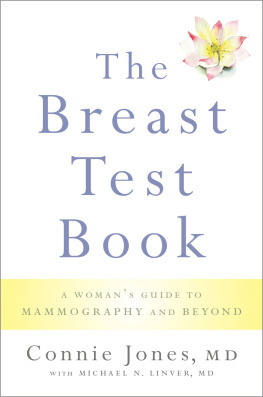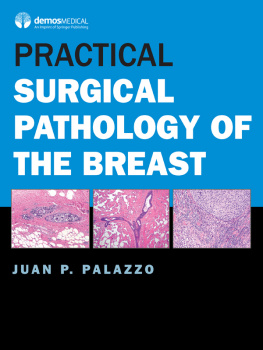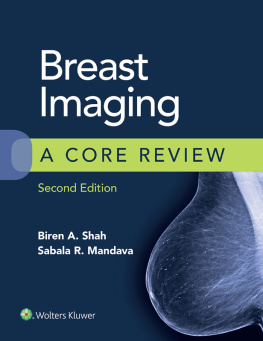Volume 1252
Advances in Experimental Medicine and Biology
Series Editors
Wim E. Crusio
Institut de Neurosciences Cognitives et Intgratives dAquitaine, CNRS and University of Bordeaux, Pessac Cedex, France
Haidong Dong
Departments of Urology and Immunology, Mayo Clinic, Rochester, Minnesota, USA
John D. Lambris
University of Pennsylvania, Philadelphia, PA, USA
Heinfried H. Radeke
Institute of Pharmacology & Toxicology, Clinic of the Goethe University Frankfurt Main, Frankfurt am Main, Germany
Nima Rezaei
Research Center for Immunodeficiencies, Childrens Medical Center, Tehran University of Medical Sciences, Tehran, Iran
Advances in Experimental Medicine and Biology provides a platform for scientific contributions in the main disciplines of the biomedicine and the life sciences. This series publishes thematic volumes on contemporary research in the areas of microbiology, immunology, neurosciences, biochemistry, biomedical engineering, genetics, physiology, and cancer research. Covering emerging topics and techniques in basic and clinical science, it brings together clinicians and researchers from various fields. provides a platform for scientific contributions in the main disciplines of the biomedicine and the life sciences. This series publishes thematic volumes on contemporary research in the areas of microbiology, immunology, neurosciences, biochemistry, biomedical engineering, genetics, physiology, and cancer research. Covering emerging topics and techniques in basic and clinical science, it brings together clinicians and researchers from various fields.
Advances in Experimental Medicine and Biology has been publishing exceptional works in the field for over 40 years, and is indexed in SCOPUS, Medline (PubMed), Journal Citation Reports/Science Edition, Science Citation Index Expanded (SciSearch, Web of Science), EMBASE, BIOSIS, Reaxys, EMBiology, the Chemical Abstracts Service (CAS), and Pathway Studio. has been publishing exceptional works in the field for over 40 years, and is indexed in SCOPUS, Medline (PubMed), Journal Citation Reports/Science Edition, Science Citation Index Expanded (SciSearch, Web of Science), EMBASE, BIOSIS, Reaxys, EMBiology, the Chemical Abstracts Service (CAS), and Pathway Studio.
2019 Impact Factor: 2.450 5 Year Impact Factor: 2.324
More information about this series at http://www.springer.com/series/5584
Editors
Sadaf Alipour and Ramesh Omranipour
Diseases of the Breast during Pregnancy and Lactation
1st ed. 2020
Editors
Sadaf Alipour
Breast Disease Research Center (BDRC), Tehran University of Medical Sciences, Tehran, Iran
Department of Surgery, Arash Womens Hospital, Tehran University of Medical Sciences, Tehran, Iran
Ramesh Omranipour
Breast Disease Research Center (BDRC), Tehran University of Medical Sciences, Tehran, Iran
Department of Surgical Oncology, Cancer Institute, Tehran University of Medical Sciences, Tehran, Iran
ISSN 0065-2598 e-ISSN 2214-8019
Advances in Experimental Medicine and Biology
ISBN 978-3-030-41595-2 e-ISBN 978-3-030-41596-9
https://doi.org/10.1007/978-3-030-41596-9
Springer Nature Switzerland AG 2020
This work is subject to copyright. All rights are reserved by the Publisher, whether the whole or part of the material is concerned, specifically the rights of translation, reprinting, reuse of illustrations, recitation, broadcasting, reproduction on microfilms or in any other physical way, and transmission or information storage and retrieval, electronic adaptation, computer software, or by similar or dissimilar methodology now known or hereafter developed.
The use of general descriptive names, registered names, trademarks, service marks, etc. in this publication does not imply, even in the absence of a specific statement, that such names are exempt from the relevant protective laws and regulations and therefore free for general use.
The publisher, the authors and the editors are safe to assume that the advice and information in this book are believed to be true and accurate at the date of publication. Neither the publisher nor the authors or the editors give a warranty, expressed or implied, with respect to the material contained herein or for any errors or omissions that may have been made. The publisher remains neutral with regard to jurisdictional claims in published maps and institutional affiliations.
This Springer imprint is published by the registered company Springer Nature Switzerland AG.
The registered company address is: Gewerbestrasse 11, 6330 Cham, Switzerland
To:My dear husband Farivar,And my lovely daughter Newsha.
Ramesh
To:Baba, Maman, and Marjan
Amirhossein, Yaas, and Noora
For the warm support they offer,
And the endless love they share.
Sadaf
Foreword
Pregnancy should be a time of rejoicing for a woman and her partner with the thrill of a new birth to look forward to. After delivery, breast feeding allows bonding and provides the best source of nutrients for the baby. In a few patients, however, pregnancy does not come alone, and a womans biggest fear, breast cancer , develops in a few women at a time in their life when they should be optimistically looking toward the future. Also for some women, breastfeeding can be a challenge. Although breastfeeding seems the most natural thing in the world, I am not sure we are really honest with women about how challenging breastfeeding can be.
Current books available to doctors dealing with breast problems during pregnancy and lactation are limited. They are written from one perspective and rarely give a balanced or comprehensive view of the problems. This book provides a range of views and perspectives of the problems women experience during pregnancy and lactation . Rather than me extolling the virtues of this book which are clear just from looking at the chapter listing, I thought it might be worthwhile sharing two challenging patients as a background as to why a new book dealing with pregnancy and lactation problems is so timely and necessary some of the patient details have been modified to protect their identity. When you read their stories, you will understand why there is a need for such a book and why the authors and editors are to be congratulated for producing such a valuable text.
RP was a 30-year-old nurse. She was pregnant and was having problems with morning sickness. She went to her GP to get advice, and just as she was on the way out of the consultation, she mentioned rather as an afterthought that she had a breast lump. GP appointments in the UK are only 10 min, and the GP indicated that normally as it was another problem, she should make another appointment to have her breast lump assessed, but the GP at that visit did perform a breast examination and confirmed a lump, reassuring that the lump felt benign. A routine referral to see a breast surgeon was made. Two weeks later, RP attended a breast clinic where a breast lump measuring 30 mm was confirmed, and while a fibroadenoma was considered the most likely, a core biopsy was performed. The pathology showed the lump was a triple-negative breast cancer and as RP was only 20 weeks pregnant. Chemotherapy was then started, and she was referred to genetics. The response to chemotherapy was good, but the gene test showed an abnormality in BRCA1, and this was thought likely pathogenic. Chemotherapy was completed, the baby was delivered, and then surgery followed. A bilateral mastectomy with reconstruction was performed after discussion of the implications of the BRCA1 abnormality. Within the breasts , there was no residual disease at the site of the initial cancer after chemotherapy . RP had a good cosmetic outcome from her surgery , and all wounds healed. She coped amazingly well during what was a hugely stressful time. Her baby was bottle-fed and thrived. Given the wish for more children, a decision was taken by RP and her husband to have IVF with preimplantation genetic testing to ensure any subsequent children did not carry the BRCA1 gene abnormality. It was during this time that the genetics team contacted RP with updated information, which had now concluded the genetic abnormality in BRCA1 present in RP had been downgraded to a variant of unknown significance. RP found this news devastating and confusing. Explaining what the downgrading meant as a risk to RP and her daughter took time and numerous visits, and slowly, RP understood this was good news in that her daughter was no longer at increased risk and the downgrading meant that she could keep her ovaries. For patients like this, a huge team of professionals is involved in treating and supporting her through very difficult times. At a time when she was just getting her life on track, RP found the news about the downgrade to be a huge psychological blow.












